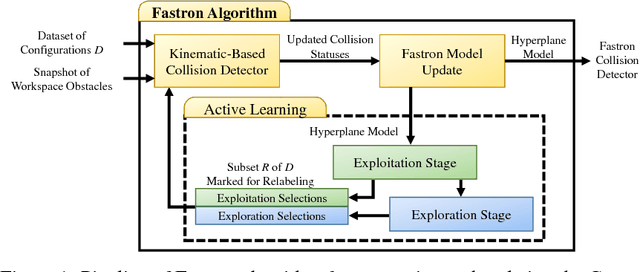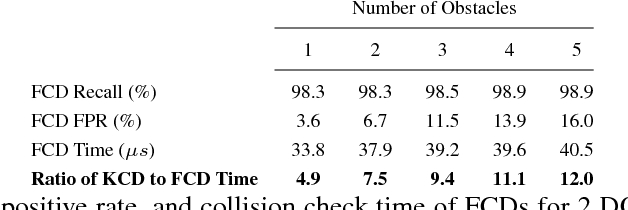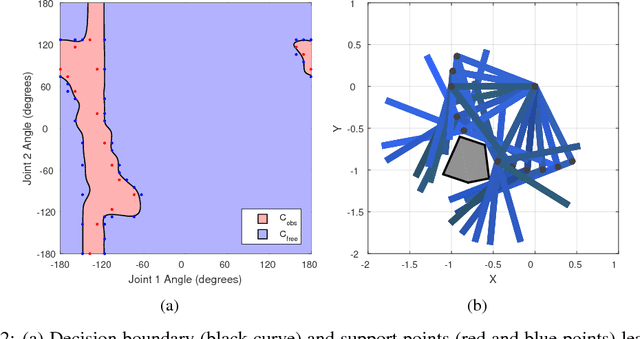Fastron: An Online Learning-Based Model and Active Learning Strategy for Proxy Collision Detection
Paper and Code
Sep 07, 2017



We introduce the Fastron, a configuration space (C-space) model to be used as a proxy to kinematic-based collision detection. The Fastron allows iterative updates to account for a changing environment through a combination of a novel formulation of the kernel perceptron learning algorithm and an active learning strategy. Our simulations on a 7 degree-of-freedom arm indicate that proxy collision checks may be performed at least 2 times faster than an efficient polyhedral collision checker and at least 8 times faster than an efficient high-precision collision checker. The Fastron model provides conservative collision status predictions by padding C-space obstacles, and proxy collision checking time does not scale poorly as the number of workspace obstacles increases. All results were achieved without GPU acceleration or parallel computing.
 Add to Chrome
Add to Chrome Add to Firefox
Add to Firefox Add to Edge
Add to Edge